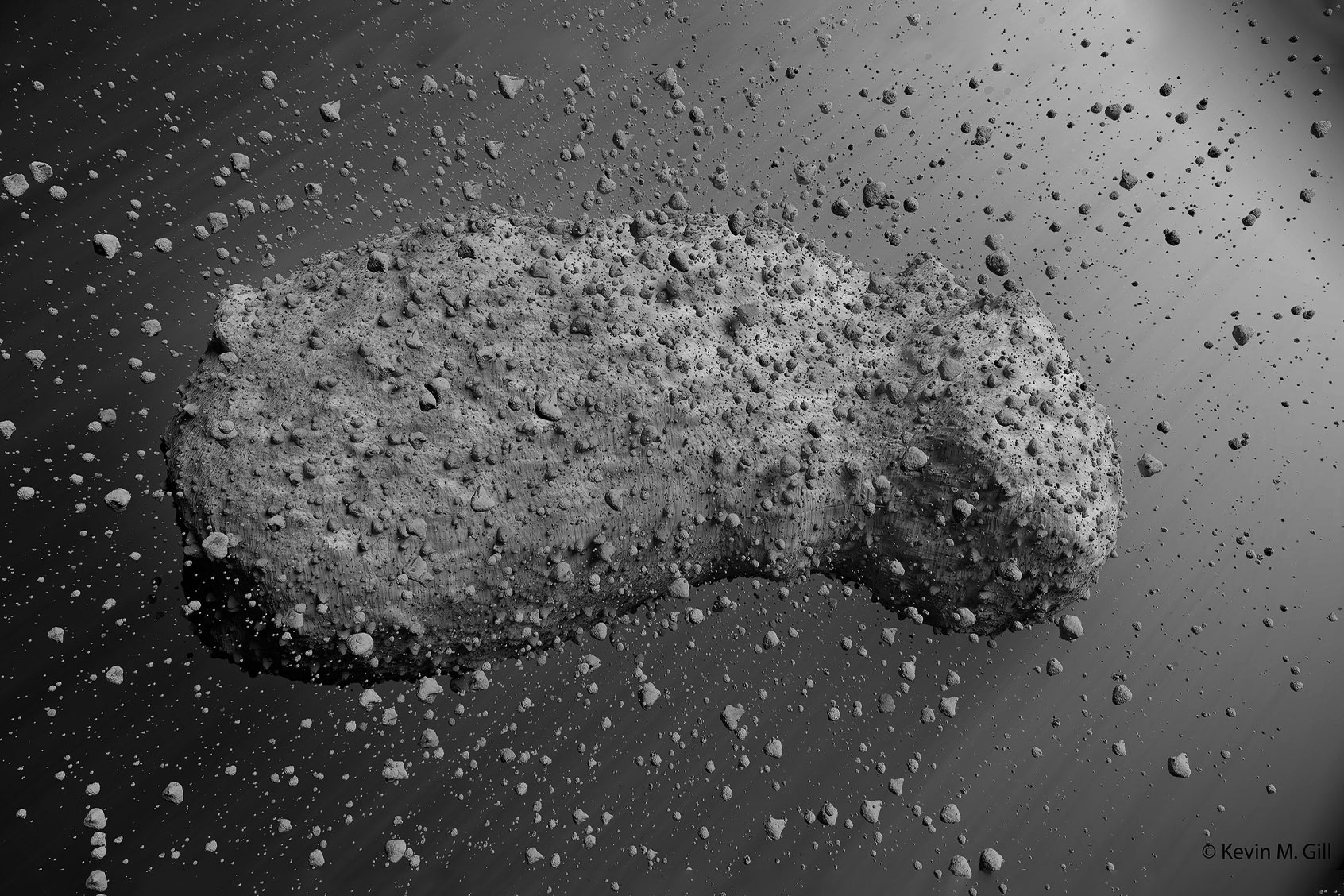Though a common premise in science fiction, the prospect of a large asteroid smashing into Earth is not fiction at all, but rather a guarantee. Extinction-event asteroids are a periodic occurrence, just like the tides or the full moon; just ask the dinosaurs. That’s why the National Aeronautics and Space Administration (NASA) spent so much time and money on the Double Asteroid Redirection Test (DART) mission, which successfully tested our ability to deflect an asteroid from hitting Earth. That mission was a success, and (seemingly) suggests that asteroids aren’t as dangerous as one might think.
But what if the asteroid in question was almost indestructible?
According to new research published in the Proceedings of the National Academy of Sciences (PNAS), led by planetary scientist Fred Jourdan from Curtin University in Australia, rubble pile asteroids are more durable (and common) than previously thought, possibly changing the way scientists think about potential planetary defense measures. Rubble pile asteroids are a particular type of asteroid that, true to their name, consist of smaller debris pieces the size of boulders and rocks that have coalesced under the influence of gravity. These types of asteroids are notoriously diffuse compared to solid rock.
Yet if you thought these rubble piles were, by virtue of their composition, weak and easily broken up, you would be mistaken.
In the study, Jourdan and his colleagues looked at the origin, composition and durability of rubble pile asteroids thanks to the Japanese Space Agency’s (JAXA) Hayabusa 1 probe sample-return mission.
Want more health and science stories in your inbox? Subscribe to Salon’s weekly newsletter The Vulgar Scientist.
As you may recall, JAXA collected samples from an asteroid named Itokawa in 2005 — and despite numerous setbacks to bring them back to Earth — they succeeded in 2010. Over a decade later, using a technique called electron backscattered diffraction, Jourdan and his team were able to determine if the returned particles of Itokawa had previously been impacted in space. Through this process of scanning the surface of the particles, the researchers concluded that these asteroids are nearly indestructible, thanks to a unique “cushion”-like feature.
“Asteroids are usually thought of as a big chunk of solid rock, but they are not all like that — some are called rubble piles because they are rocks, boulders, and pebbles agglomerated together, but there is a lot of void spaces between those rocks and that extra void space make them shock-absorbent,” Jourdan told Salon via email. “Rubble pile asteroids like Itokawa are like a giant space cushion.”
Jourdan further explained that cushions are soft because there is a lot of air trapped in them.
“So it’s good to absorb shock, right?” Jourdan said. “Same for rubble pile asteroids, they are just good at absorbing shock.”
This new discovery could be why the team of researchers discovered that Itokawa is so old — an estimated 4.2 billion years old, which is nearly the same age as our own solar system.
“We were surprised,” Jourdan said about the asteroid’s age. “Most models predict that an asteroid with a size of a few hundred meters to a few kilometers should survive ambient bombardment in the asteroid belt for a few hundred millions of years – yet Itokawa survived more than 4.2 billion years; much longer than we thought it would.”
Jourdan said the most important implication of his research though is that rubble pile asteroids are “resistant to bombardment.” While that might sound like we Earthlings are doomed in terms of planetary defense, he said we can “use that to our advantage.”
“So what we are suggesting in our study is that we should explore the possibility of blasting a nuclear device very close to the asteroid.”
When it came to the DART mission 2022, NASA sent a 1,320-pound spacecraft to crash into a small asteroid called Dimorphos and throw it off orbit. While the mission was a resounding success, Jourdan said “the problem is that it requires to detect the asteroids very early on since the push will be very small.”
“So if the asteroid starts to be pushed by kinetic impact say three years before it collides with Earth, no problem; DART-like devices can do it,” Jourdan said. “But what if we don’t have enough time? What if we suddenly discover that an asteroid will impact Earth within 3 months? What do we do?”
This is where Jourdan’s new research comes into play.
“So what we are suggesting in our study is that we should explore the possibility of blasting a nuclear device very close to the asteroid,” Jourdan said. “Why? Because the shock wave would be much more energetic than small kinetic impactors like DART.”
Jourdan said the fact that rubble pile asteroids are so durable means that the goal of the blast wouldn’t be to destroy them, but merely to nudge their trajectory so that they wouldn’t hit Earth.
“Exploding an asteroid is really not the way to go since all the debris would rain down and cause similar devastation,” he said.

